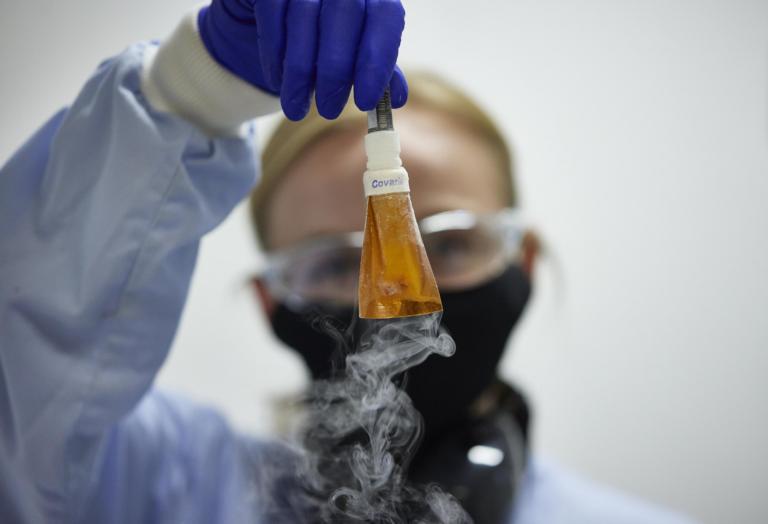
Yesterday, the international project Biodiversity Genomics Europe started. This is an ambitious initiative to bring European DNA-research to new heights. The cutting-edge project is led by Naturalis Biodiversity Center and carried by partners from over 20 countries.
Europe in the leadin DNA-research
Under the name Biodiversity Genomics Europe (BGE), 33 European institutes strive to map all European species by creating barcodes for all species. A barcode is a piece of DNA which is used to identify and detect a species. To achieve this goal, BGE is bringing together two fields of research: genomics and biodiversity research.
Genomics is the science of genomes, meaning the entirety of genetic material in the cell of an organism. That science offers crucial new instruments to answer questions in the field of biodiversity. DNA-research is our best hope to successfully map relationships between ecosystems, species and individuals, and to predict how individuals and groups react to changes in the environment.
The, by Horizon Europe financed, giant project BGE brings together the vital players in the field of fundamental DNA technologies, DNA-barcoding and genome sequencing in Europe. The consortium will streamline the launch of these methods throughout Europe, causing research and policy in the field of nature perseveration to change drastically.
BGEs project director Dimitris Koureas of Naturalis Biodiversity Center says: “We see BGE as a mechanism through which we can go out from the limitations of national investments that we already have in biodiversity genomics and into the European level. We are looking at BGE as a mechanism to build the economies of scope and scale that we need for the future.”
DNAbarcoding
For DNA-barcoding short pieces of DNA are used to differentiate between species; similar to barcodes in the supermarket that helps to distinguish different products. Together with modern genetic technology, DNA-barcoding has the potential to fast-track the identification of life on earth and lay the foundation for worldwide nature preservation.
Genomesequencing
Genome sequencing is a technique that can determine the order of letters in the all genetic material of a species. This technique allows scientists to identify and localize genes and other characteristics of the genetic material, creating a blueprint of the genetic code of an organism. It gives a complete image of how biological systems function and, crucially, how species react and adapt to the changing environment.
Moreinformation
For further information or interviews please contact info@biodiversitygenomics.eu . A selection of images and graphics can be downloaded from this link.
Editor's note
The €21 million Biodiversity Genomics Europe (BGE) Project (biodiversitygenomics.eu) is co-funded by the European Commission, as well as the UK and Swiss governments. This first large European project will run until 2026. It brings together organisations from the BIOSCAN Europe DNA-barcoding consortium (104 partner institutions across 29 countries) and the ERGA genome-sequencing consortium (709 members across 37 countries).
BIOSCAN Europe brings together existing European national networks, scientists and projects that work on the monitoring of biodiversity using DNA to build an efficient European system of interconnected facilities for rapid identification and monitoring of species. The initiative is part of the International Barcode of Life Consortium (iBOL) and its global BIOSCAN initiative, which aims to transform understanding of species diversity, their interactions, and dynamics. BIOSCAN Europe’s aim is to establish a European hub for the International Barcode of Life consortium.
The European Reference Genome Atlas (ERGA) initiative is a pan-European scientific community of experts in genome sequencing that aims to coordinate the generation of reference-quality genomes for all eukaryotic European species. ERGA follows a distributed model to create and consolidate a collaborative and interdisciplinary network of scientists across Europe and associated countries. ERGA works to develop and propagate guidelines for scaling up all the steps required for state-of-the-art reference genome generation through training and knowledge transfer.
Visit www.bioscaneurope.org and www.erga-biodiversity.eu for more details on the individual members of both networks.